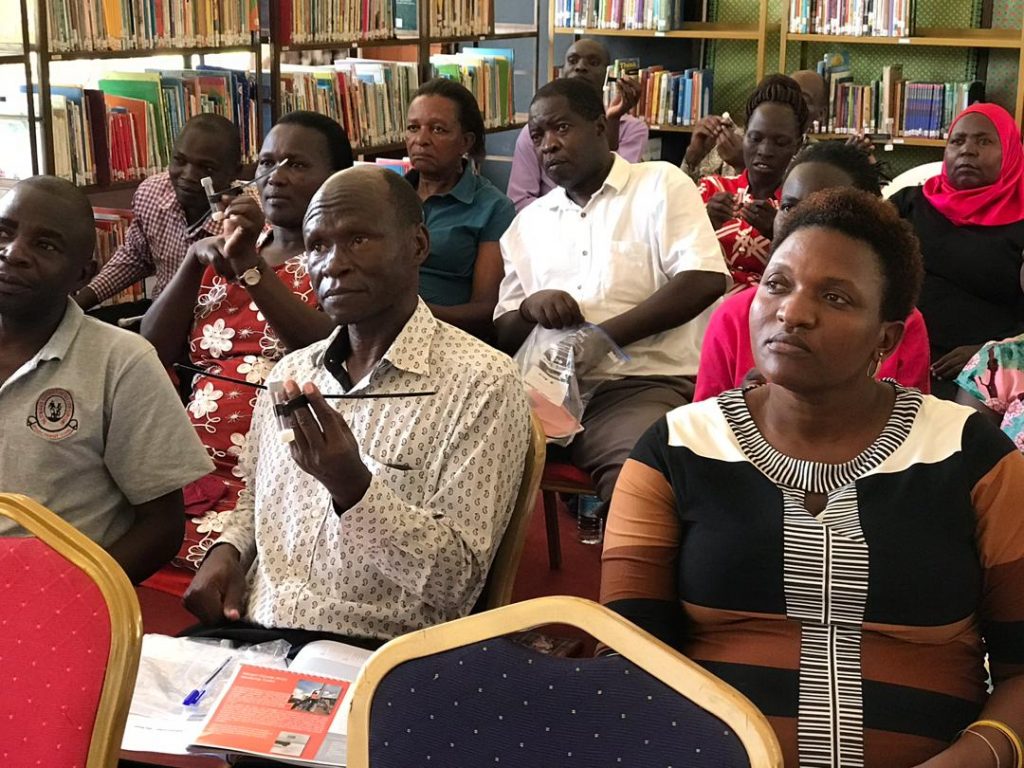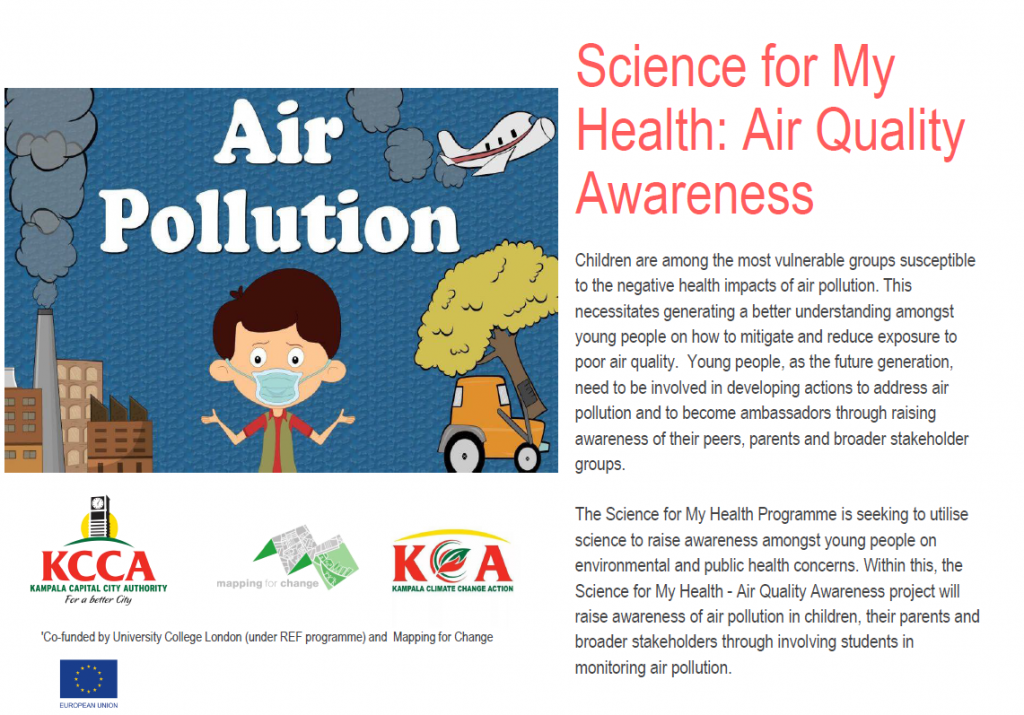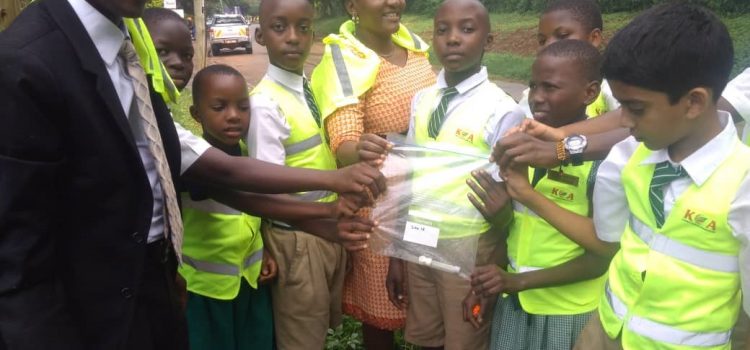
Air pollution in Kampala is deteriorating at a concerning rate causing serious threat to the health of the population across the City. Children, older people and those with existing heart and lung conditions are among the most vulnerable and many of them are exposed to poor air quality during their daily commute to work and school. This is compounded by the fact that many schools are located near high traffic areas.
Earlier this year we reported on the work we started with Kampala Capital City Authority (KCCA) and the National Environment Management Authority (NEMA) in setting-up an air quality monitoring programme, primarily focusing on nitrogen dioxide. The results from the first few months have been added to our Community Maps platform
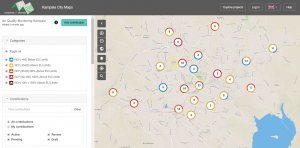
The Science for My Health Programme kicked-off in April and sets out to utilise science to raise awareness amongst young people on environmental and public health concerns. Thirty teachers from 18 schools across Kampala were given basic training on air quality, awareness raising, and setting-up monitoring stations around schools. They were all supplied with the schools toolkit that we developed, offering lesson plans, science experiments, different resources and materials to support their work with the children.
Each of the schools have now set-up their second batch of diffusion tubes. Several of the lessons and experiments about air and its components have been completed and the school ambassadors have been sharing their newly acquired knowledge with their fellow students.
School Ambassadors sharing their experience in receiving reports from fellow students about polluters
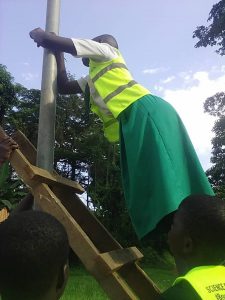
Further lessons and monitoring will be undertaken up until the end of the month and will culminate in an inter-schools debate and closing event. This is the first programme of it’s kind in Uganda, engaging young people in both the collection of air quality data, but more importantly, in developing a deeper understanding of the contributory factors.
Continuous sensitisation and engagement of the community surrounding schools, school committee members, administrators and the general public is needed. The air quality lesson plans should be integrated into the national curriculum to support further engagement with science through very practical sessions on a very critical issue.
